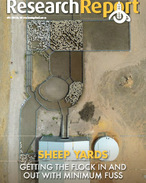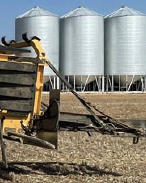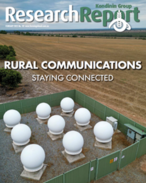The ERF legislation contains a number of features that strongly encourage the aggregation of projects and even the aggregation of different project types.
7.3.1 Aggregation under a single method
Under the legislation (The Carbon Credits (Carbon Farming Initiative) Act 2011 and supporting Carbon Credits (Carbon Farming Initiative) Regulations 2011 are collectively referred to as the CFI legislation), a project is defined to include ‘a set of activities'.
This means that project proponents will be able to put forward aggregated projects that consist of many abatement activities or sub-projects with a single method.
In some cases, the proponent will not be able to report on all of the component parts of an aggregated project. To accommodate such situations, the legislation allows proponents to report on, and receive credits for, part of a project. Proponents will need to report on the remaining parts of the project within the maximum reporting period of five years.
7.3.2 Aggregation under different methodologies
Proponents will also be able to bundle several distinct projects, which may be declared under different methodologies, to be considered together during processes such as the registration of projects, reporting on projects and the issuing of ACCUs. Specific legislative provisions are not required to permit the bundling of projects. However, to reduce administrative costs for proponents, information that is common to all of the projects would only need to be provided once to the regulator.
Participants in the purchasing process will be able to bundle projects into a single bid and, if successful, into a single contract.
7.3.3 Aggregation and carbon sequestration rights
Under the legislation, a project proponent is the entity that is responsible for carrying out the project; has the legal right to carry out the project; and, for sequestration offsets projects, has the relevant carbon sequestration rights as well.
Before the CFI was integrated into the ERF, the requirement to hold the relevant carbon sequestration rights created a barrier to the aggregation of sequestration activities. This was because landowners may have been unwilling to transfer those property rights to the project proponent. They may have been more willing to grant the project proponent a legal right to undertake a project on their land.
To make it easier to undertake an aggregated sequestration project, the amendments made to the CFI when it was integrated the ERF, have now removed the requirement for the proponent of a sequestration project to hold the relevant carbon sequestration rights. For all types of projects, the proponent is the person that is responsible for carrying out the project and has the legal right to do so.
The previous CFI legislation required that anyone with an eligible interest in a sequestration project must give their consent to the project, and this remains a requirement under the ERF (however, the ERF allows that this consent can be provided after the registration of a project). Under the proposed law, proponents will need to obtain the consent of relevant carbon sequestration rights holders as part of this process.
These changes do not affect provisions relating to native title or Indigenous-held land. Native title holders and Indigenous landowners can continue to undertake projects and give their consent to sequestration projects as they do under the current legislation.
7.3.4 Minimum bid size for bidding under the ERF
Under the ERF, the regulator may specify a minimum bid size for auctions. The minimum bid size will provide strong incentives for aggregated projects.
Explore the full Workshop Manual: The business case for carbon farming: improving your farm’s sustainability (January 2021)
Read the report
RESEARCH REPORTS
1. Introduction: background to the business case
This chapter lays out the basic background and groundwork of the manual
RESEARCH REPORTS
1.2 Being clear about the reasons for participating
Introduction: background to the business case
RESEARCH REPORTS
1.4 Working through the business case for carbon farming
Introduction: background to the business case
RESEARCH REPORTS
1.5 Factors determining project economics
Introduction: background to the business case
RESEARCH REPORTS
1.8 Important features of the business case
Introduction: background to the business case
RESEARCH REPORTS
2. How carbon is farmed under the ERF
This chapter considers in detail the activities that constitute carbon farming
RESEARCH REPORTS
2.5 Carbon farming under the Emissions Reduction Fund
How carbon is farmed under the ERF
RESEARCH REPORTS
3. The policy context and the price of ACCUs
This chapter takes a broad look at the policy context for carbon farming






















